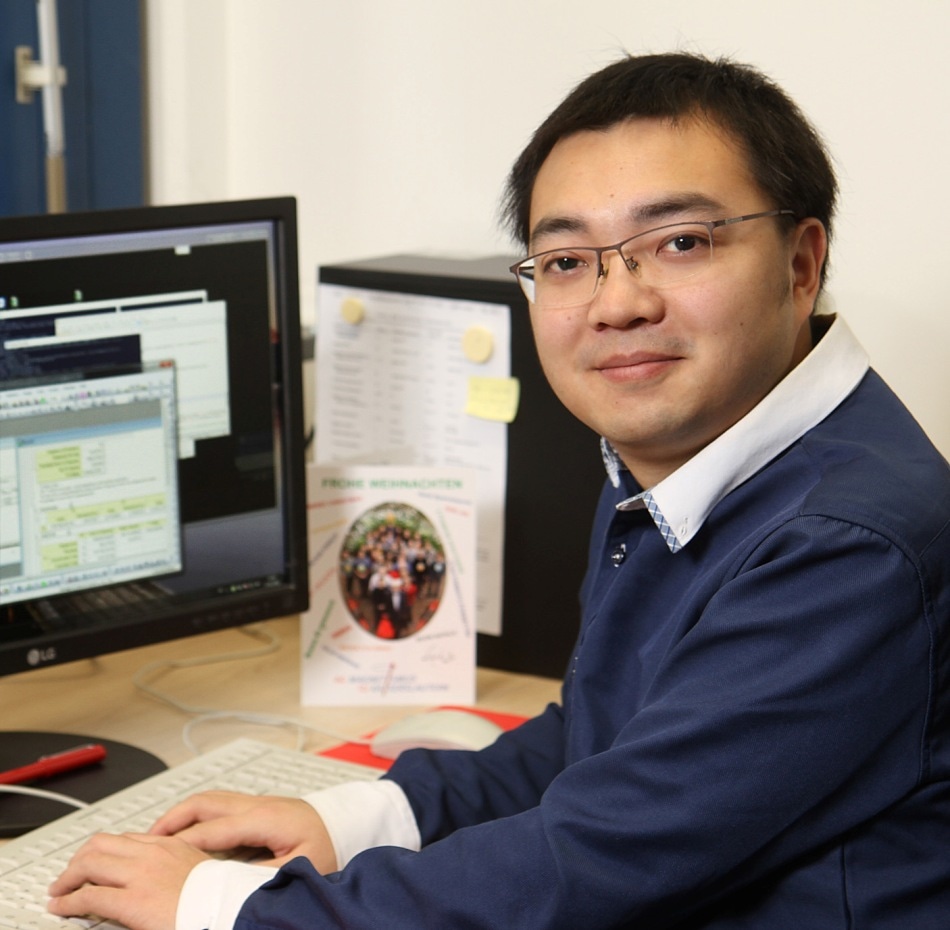Jan 24 2018
Whether it's a smart phone, dialysis machine or computer, there are no electronic devices that do not contain chips and electronic components. The individual circuit elements are thus frequently wired with the help of three dimensional bridge constructions.
 Lead author Qi Wang. (Image credit: TUK/Koziel)
Lead author Qi Wang. (Image credit: TUK/Koziel)
Presently, physicists at Technische Universität Kaiserslautern (TUK) are working on an extremely efficient variation, where specific quasiparticles called magnons are being employed instead of electrons. They have demonstrated for the very first time, in a preliminary model, that the flow of magnon current is possible in an integrated magnon circuit, in which case the components are just being connected two dimensionally. These investigations have been featured in ‘Science Advances’.
A technical revolution happened when the US engineer Jack Kilby created the integrated circuit in the 1960's. Kilby received the Nobel prize for Physics in the year 2000 and is presently referred to as the 'father of microchips'. This technology, initially assembled in a pocket calculator, allowed the triumph of the computer shortly afterwards. From that point on, computers came with smaller and smaller processors.
According to Associate Professor Andrii Chumak,“These circuits then set the stage for today’s consumer electronics”. Andrii Chumak is a researcher with his own sub-group in the Magnetism Research Group lead by Professor Burkard Hillebrands in Department of Physics at TUK.
In a present study, the lead author Qi Wang, Dr. Chumak’s PhD student, is currently working on a new generation of circuits. “Information can be transported in the form of intrinsic angular momentum” continues Chumak. “These quantum particles are magnons.”
Magnons are capable of transporting significantly increasing amounts of information when compared to electrons, need considerably less energy and also produce less wasted heat. This makes them useful for more efficient and faster computers, mainly in mobile applications.
In the recently published study, the scientists have for the first time described the magnon integrated circuit, in which information is performed through these particles. In this case, line crossings and conductors are necessary for connecting the individual switching elements, as seen in the case of electronic circuits. The researchers have also succeeded in producing such a junction for magnons in their simulations.
“We have managed to include this phenomenon into our calculations which is already well-known in physics and will be placed into application for the first time in magnonics” according to Qi Wang. “When two magnon conductors are placed rather closely together, the waves communicate to a certain point with each other, this means, that the energy of the waves will be transferred from one conductor to the next.” This has been employed in optics applications for quite some time: for instance, for the transportation of information between optical fibers.
The sub-group of Professor Hillebrands' Magnetism Group, the "Nano-Magnonic" team headed by Chumak, have harnessed this method for the wiring of circuit elements on a magnonic chip in an innovative manner. The most special aspect in these new simulated results, is that they can be applied for junctions without any three dimensional bridge construction. This is essential in classical electronics to ensure the flow of electrons between several elements. “In our circuits we use two dimensional connections, in which the magnon conductors only need to be placed close enough to each other” says Qi Wang. This connection point is known as a directional coupler. Presently, the researchers intend to layout the first magnonic circuit using this model.
For a future development of computer components, these innovative circuits could contribute majorly to saving material and cost. In addition to that, the size of the simulated components is found to be within the nanometer regime, which is indeed comparable to contemporary electronic components. However, the information density employing magnons is significantly higher.
Professor Chumak was awarded one of the greatest research funding grants, an ERC Starting Grant for his research in the area of Magnonics. The physicist and his PhD student Wang are also part of OPTIMAS, funded by the state of Rhineland Palatine.
The study was featured in the well-known journal Science Advances: “Reconfigurable nanoscale spin-wave directional coupler”